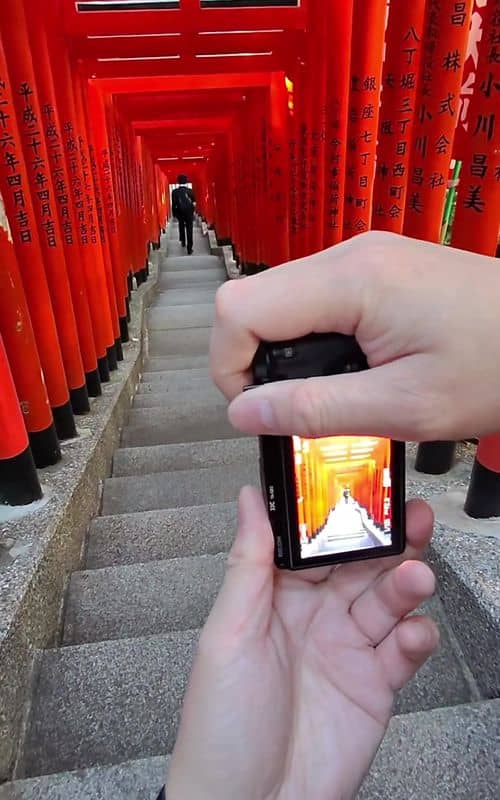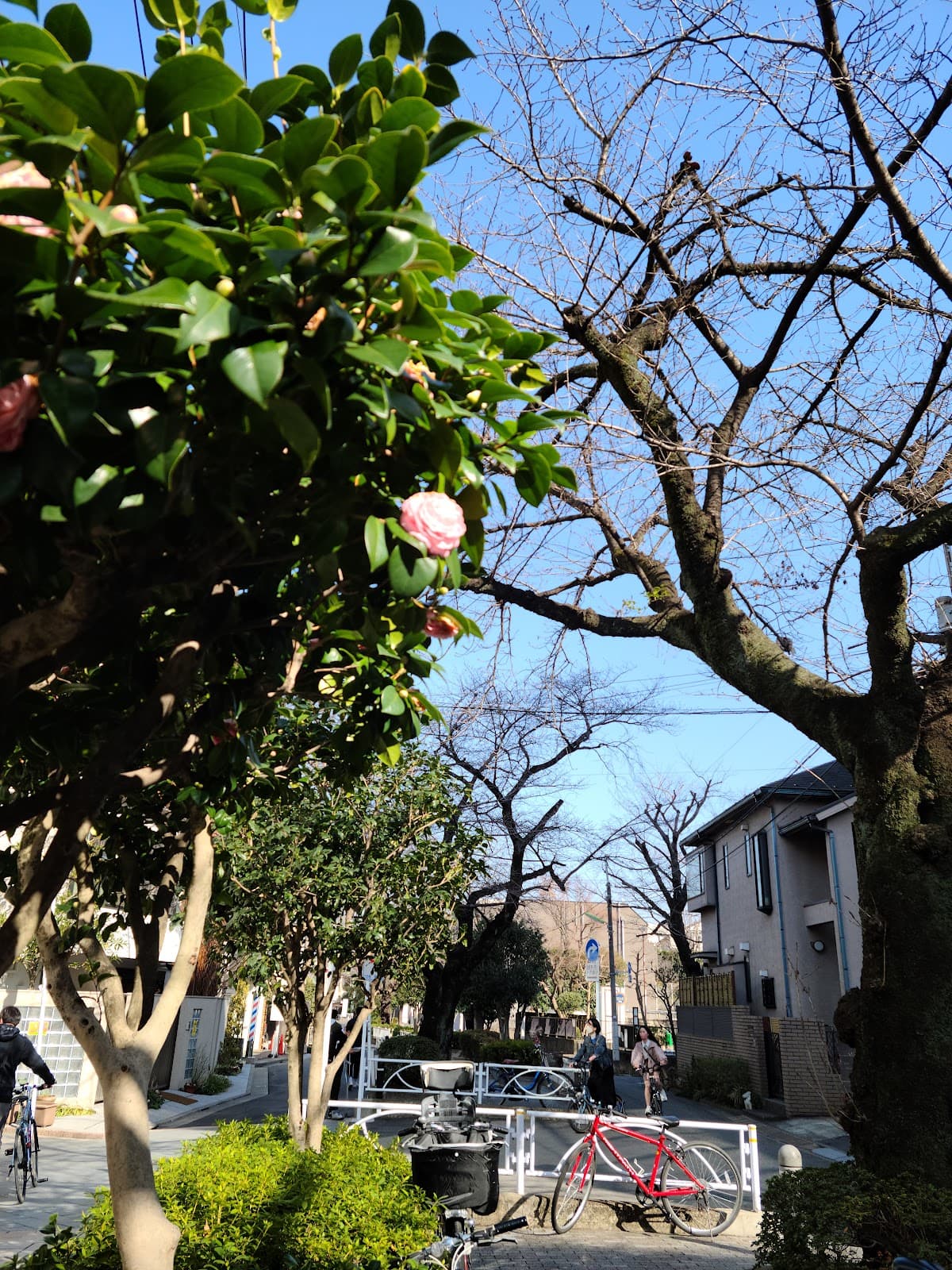
Hie Shrine Tokyo
A serene Shinto shrine in Tokyo featuring a stunning tunnel of red torii gates, offering a peaceful escape and cultural immersion.

Highlights
Must-see attractions

Social
From TikTok & Reddit
Best Time
Fewer crowds, better photos

Hie Shrine Tokyo
Best Time
Fewer crowds, better photos

Highlights
Must-see attractions
A serene Shinto shrine in Tokyo featuring a stunning tunnel of red torii gates, offering a peaceful escape and cultural immersion.
"A beautiful, less crowded alternative to Kyoto's Fushimi Inari, right in the heart of Tokyo!"

📸 Capture the Torii Gates
Get stunning photos of the red torii gate tunnel, especially on weekdays when it's less crowded.
🚶♀️ Explore the Grounds
Don't just focus on the gates; wander through the shrine's gardens and discover smaller sub-shrines.

Highlights
Discover the most iconic attractions and experiences

Tunnel of Red Torii Gates
Main path leading up to the shrine
Walk through a vibrant tunnel of bright red torii gates, offering a striking visual reminiscent of Kyoto's Fushimi Inari.

Sanno Inari Shrine
Within the Hie Shrine complex
Discover a smaller, charming Inari shrine nestled within the main grounds, featuring its own set of smaller torii gates.

The Shrine's Main Hall
At the top of the hill
Explore the main Shinto shrine building, offering a peaceful atmosphere and a glimpse into traditional Japanese architecture.
Plans like a pro.
Thinks like you
Planning Your Visit
Beat the Crowds for Photos
Respectful Shrine Etiquette
Best Times
Insider Tips
from TikTok, Instagram & Reddit
📸 Capture the Torii Gates
Get stunning photos of the red torii gate tunnel, especially on weekdays when it's less crowded.
🚶♀️ Explore the Grounds
Don't just focus on the gates; wander through the shrine's gardens and discover smaller sub-shrines.
⬆️ Use the Escalator!
Surprisingly, Hie Shrine has an escalator, offering a unique blend of tradition and modernity.
🙏 Pray for Success
This shrine is known for prayers related to business and success. Consider offering a 5-yen coin for good luck.
Tips
from all over the internet
📸 Capture the Torii Gates
Get stunning photos of the red torii gate tunnel, especially on weekdays when it's less crowded.
🚶♀️ Explore the Grounds
Don't just focus on the gates; wander through the shrine's gardens and discover smaller sub-shrines.
⬆️ Use the Escalator!
Surprisingly, Hie Shrine has an escalator, offering a unique blend of tradition and modernity.
🙏 Pray for Success
This shrine is known for prayers related to business and success. Consider offering a 5-yen coin for good luck.
📍 Easy Access
Easily reachable via Tameike-Sanno or Akasaka-Mitsuke stations, making it a convenient stop.
What Travellers Say
Reviews Summary
Visitors consistently praise Hie Shrine for its stunning red torii gate tunnel, often comparing it favorably to Kyoto's Fushimi Inari for its accessibility and fewer crowds. The blend of traditional beauty with modern conveniences like an escalator is also a highlight. Some find the shrine's peaceful atmosphere a welcome escape from Tokyo's hustle.
"Hie Shrine is a tranquil and sacred place, offering visitors a peaceful escape from the bustling city. Located in the heart of Tokyo, it boasts beautiful traditional architecture and lush surroundings. The shrine’s serene atmosphere makes it a perfect spot for reflection and prayer. The main hall, or honden, is an architectural marvel, and the vibrant red torii gate adds to the shrine’s majestic feel. Visitors can enjoy a quiet walk through the grounds, especially during the changing seasons when the foliage enhances the beauty of the area. The cultural significance of Hie Shrine, combined with its peaceful ambiance, makes it a must-visit destination for anyone seeking a deeper connection to Japan’s spiritual heritage."
Hoai Nguyen
"Lovely temple. Can be a bit too crowded, but still a nice visit. From the other side, you approach the temple through torii gates which gives you a glimpse of Kyoto.
I was lucky to "attend" some kind of ritual and we were not allowed to take photos, which I respect so much! The lady was telling everyone with such kindness that taking photos is forbidden. Japanese people are so kind."
Dylan Dog
"A great shrine that has little to no crowd! Good spot if you’re looking for many Tori gates without the rush. The escalator up was quite nice."
Maria
What People Like
What People Dislike
Frequently Asked Questions
🚇 🗺️ Getting There
Hie Shrine is conveniently located and easily accessible by public transport. The closest stations are Tameike-Sanno Station and Akasaka-Mitsuke Station on the Tokyo Metro Ginza and Namboku Lines. From either station, it's a short walk to the shrine.
Yes, Hie Shrine is situated in the Akasaka district, which is relatively close to areas like Roppongi and the Imperial Palace. It's a great addition to an itinerary exploring central Tokyo.
While driving is possible, parking in central Tokyo can be challenging and expensive. Public transportation is generally the recommended and most convenient way to reach Hie Shrine.
Visitors often arrive via the main entrance, which leads to a staircase. However, some TikToks suggest an alternative approach to find the torii gate tunnel, involving walking across to the other side of a bridge.
Hie Shrine offers an escalator, which is a unique feature that can assist visitors with mobility challenges in reaching the upper shrine grounds.
🎫 🎫 Tickets & Entry
No, Hie Shrine offers free entry to its grounds, including the iconic tunnel of red torii gates. This makes it an accessible and budget-friendly attraction.
Hie Shrine is generally open from early morning until late afternoon or early evening. Specific hours can vary, but it's typically accessible during daylight hours for visitors to explore.
While the shrine grounds are usually accessible during daylight hours, it's best to check for any specific evening access or illumination schedules. Most visitors explore during the day.
Advance booking is not required for Hie Shrine as there is no entrance fee. You can visit spontaneously during its operating hours.
Hie Shrine hosts several auspicious annual festivals and events, most notably the Sanno Matsuri in June, one of Tokyo's grandest festivals. Check the official shrine website for the most up-to-date event schedules.
📸 📸 Photography
For the best photographic opportunities, aim for weekday afternoons when crowds are minimal, allowing you to capture the iconic red torii gates without many people in the frame. Early mornings are also excellent for a serene experience.
The most photographed spot is undoubtedly the tunnel of bright red torii gates. The Sanno Inari Shrine within the complex also offers charming photo opportunities with its smaller gates.
Tripod usage policies can vary at religious sites. It's advisable to be discreet and respectful, especially during busy times. Check for any posted signage regarding photography equipment.
Yes, many visitors find Hie Shrine to be a great alternative to Kyoto's Fushimi Inari for its similar red torii gate tunnel experience, but with significantly fewer crowds, making it easier to get unobstructed photos.
Hie Shrine is ideal for capturing vibrant cultural and architectural photography, particularly its striking red torii gates. It's also a peaceful spot for portrait photography amidst a unique backdrop.
🎫 🙏 Onsite Experience
Hie Shrine is a historic Shinto shrine dedicated to the deity of Mount Hie. It's known for its association with the Tokugawa shogunate and is a popular place for prayers for business success and good fortune.
When visiting, it's polite to bow lightly at the entrance, avoid walking down the center path (reserved for deities), and perform the purification ritual at the chozuya if you wish. You can offer a coin and make a wish.
One of the most surprising features is the presence of an escalator, offering a modern convenience to reach the shrine's upper levels, contrasting with its traditional architecture.
Yes, visitors can make wishes and pray at Hie Shrine. It's customary to offer a coin (often 5 yen for good luck) into the offering box before bowing, clapping, and making your wish.
While it can attract visitors, Hie Shrine is often described as a peaceful escape within the bustling city. Visiting on weekdays or during off-peak hours enhances the serene atmosphere.
For Different Travelers
Tailored advice for your travel style
👨👩👧 Families with Kids
Beyond the main attractions, the shrine grounds offer space to explore, and the peaceful atmosphere can be a welcome respite. It's a great way to introduce children to Japanese culture and religious sites in a manageable and accessible way, without the overwhelming crowds often found at larger attractions.
📸 Photographers
Beyond the main tunnel, the Sanno Inari Shrine offers a more intimate setting with its own collection of smaller torii gates. The contrast between the traditional shrine architecture and the modern Tokyo skyline in the background can also provide interesting photographic compositions. Remember to be respectful of worshippers and avoid intrusive photography.
🚶♀️ Solo Travelers & Day-Trippers
Solo travelers can enjoy the tranquility of the shrine grounds and the opportunity for quiet reflection. The unique features, like the escalator and the striking torii gates, provide memorable moments and great photo opportunities to share. It’s a perfect spot to experience a slice of Tokyo’s spiritual side.
Deep Dives
In-depth insights and expert knowledge
The Iconic Red Torii Gates
Pro-Tip: For the best shots without crowds, aim for weekday afternoons or early mornings. The contrast of the red gates against the greenery and Tokyo's urban backdrop is particularly captivating.
A Blend of Tradition and Modernity
The shrine complex itself is a peaceful oasis amidst the bustling Akasaka district. Beyond the main torii gate tunnel, you can explore the main hall, smaller sub-shrines like Sanno Inari Shrine, and serene garden areas. It’s a place where you can feel a sense of calm and spiritual reflection, despite being in the heart of a major metropolis.
Cultural Significance and Prayer
Visitors often participate in traditional prayer rituals. This typically involves offering a coin (a 5-yen coin is common for its auspicious sound) into the offering box, followed by a specific sequence of bows, claps, and a silent wish. Understanding and respecting these customs enhances the visitor's experience and shows reverence for the sacred site.






Social
from TikTok, Instagram & Reddit